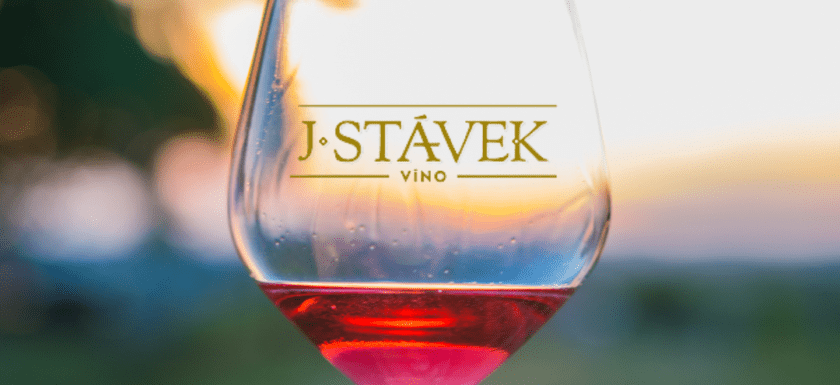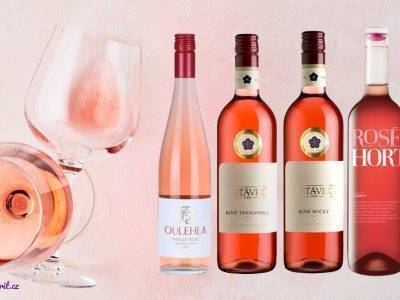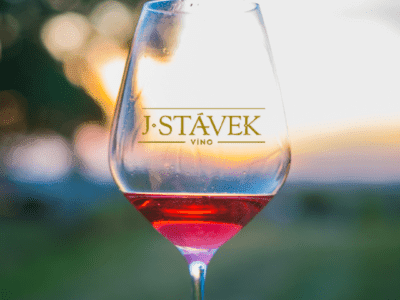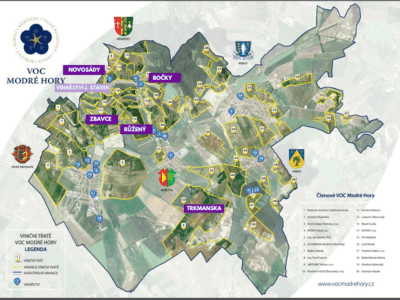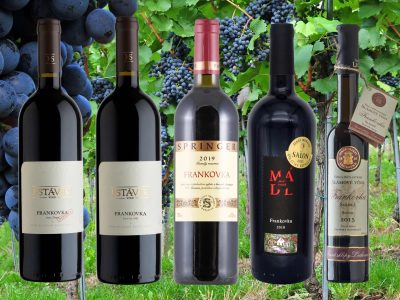Together with JIří Hort, Jan Stávek belongs to the pioneers of rosé wines in the Czech Republic. In recent years, however, Víno J. Stávek has begun to profile itself as a producer of more complex, serious, matured rosé wines, which can perfectly mature for several years in the bottle. In October 2021, I participated in an amazing tasting of 6 vintages of rosé Trkmanska (2019 – 2014) and I must say that the 2014 vintage was still in excellent condition (89 points). Matured rosé Bočky can even mature even longer – around 10 years. There are only a few regions in the world that produce great maturated rosé, such as Bandol in Provence. That is why you will certainly not be surprised that Rosé Bočky is the best-selling wine of Vinařství J. Stávek abroad. Of course, the winery also offers a “fresh” based on primary fruit aromas – Rosé Tercie, which retains its fresh characteristics for a shorter period of time. However, even in Tercie, a trace of tannin can be recognised thanks to the maceration on the skins, which is not usual for most rosé wines on the market. Jan Stávek is a true pioneer of matured rosés, which are not built only on strong aromatics, but rather on a multi-layered aroma and fuller taste.
We try to profile mainly in more complex, serious, matured rosé wines.
Rosé Bočky is our best-selling wine abroad.
Let's take a look at the creation of your rosé wines. Why did you focus on rosé wines, among other things?
It’s been 25 years. It’s hard to remember, but it was a hole in the market. At the time, no one except Jirka Hort was involved in rosé.
Your rosé wines also belong to the top of Moravian winemaking. What is the reason for that?
Jirka Hort makes great rosé wines with a consistent style. In our winery, we have gone through a certain development around their production. Previously, we regularly won champions and gold medals at the biggest rosé wine competition in our country – Jarovín. But that time is already over (note GourmetSpirit: in 2015, rosé wine from J. Stávka was the champion of the Jarovín rosé competition). We are increasingly trying to profile more complex, serious, matured rosé wines. However, this style is more difficult to understand because it is a more oxidative wine, which is not so initially aromatic, but can age for several years in the bottle.
What is your approach to working in the vineyard? Do you want to make rosé wines every year or only in vintages less favorable for sufficient ripening of grapes for red wines? Or are some vineyards or their parts always intended for the production of rosé wines and the work in the vineyard is adapted to this, e.g. higher yield, higher acidity, earlier harvest, etc.?
I definitely make rosé every year and I definitely don’t use grapes that are not suitable for making red wine. The same quality grapes must be used for rosé. Only in this way can the wine gain some potential for aging.
What styles of rosé wines do you make?
Rosé Tercie is the lightest style of rosé we offer. This wine is closest to the usual style of pool wines. Nevertheless, this is not the usual “fresh wine”, because even in the aftertaste of this wine you can easily smell tannin – thanks to the shorter maceration on the skins. I like a bit of tannin in the aftertaste in all wines because it encourages you to drink more. If the aftertaste is sweet, then it is not too tempting for the next gulp. Still, I leave some residual sugar, but still at the level of dry wine. We bottle Tercie very early (around February). The wine is typical for its fruity aroma – Merlot is manifested by notes of strawberries, and Frankovka is always revealed by notes of cherry stone.
Rosé Trkmanska and Bočky are V.O.C. (note GourmetSpirit: Wines Original Certification) and are built on longer maceration and aging on yeast. Rosé Bočky is made from grapes from fifty-year-old vines. Rosé Trkmanska is still rather fruity, something between Tercie and Bočky; it is fermented in stainless steel, but with a long maceration.
Rosé wines are usually intended for relatively early consumption, with a few exceptions. Even Jiří Hort claims that he does not want to produce rosé wines with the potential of maturing for more than 2 years, because there is not much interest in them among consumers. What led you to create the long-lasting rosé Bočky?
As I already mentioned, Jirka has chosen the less complicated path. I don’t like that. The beginning was difficult, but now the matured rosés are selling well. On the other hand, without Jiří Hort, the question is how popular pink wines would be among consumers today.
Do you use direct instant pressing of blue grapes or the saigne bleeding method with short maceration?
It depends. We generally work with longer and cold macerations.
What is your opinion on the concentration of must in red wines, when rosé is produced as a by-product by the bleeding method? Do you ever use this method as well, or do you prefer grapes 100% prepared for a given style of wine, i.e. either rosé or red wines?
I sometimes use this method as well. It can be a win win, as the red gains concentration and you press the rosé at the maceration date you choose.
How do you work with yeast, in which containers and at what temperature do you ferment your rosé?
For VOC rosé Trkmanska and Bočky, we use our own selected yeast from the Bočky vineyard. We ferment in a wooden barrel and do not control the temperature. Rosé Trkmanska is fermented in stainless steel at a temperature of up to 20°C. For rosé Tercie, which is a rosé wine based on primary aromatics, we use bought-in yeast. Fermentation also takes place in stainless steel vessels, but at a temperature of up to 16 °C, in order to preserve the primary fruit profile of the wine.
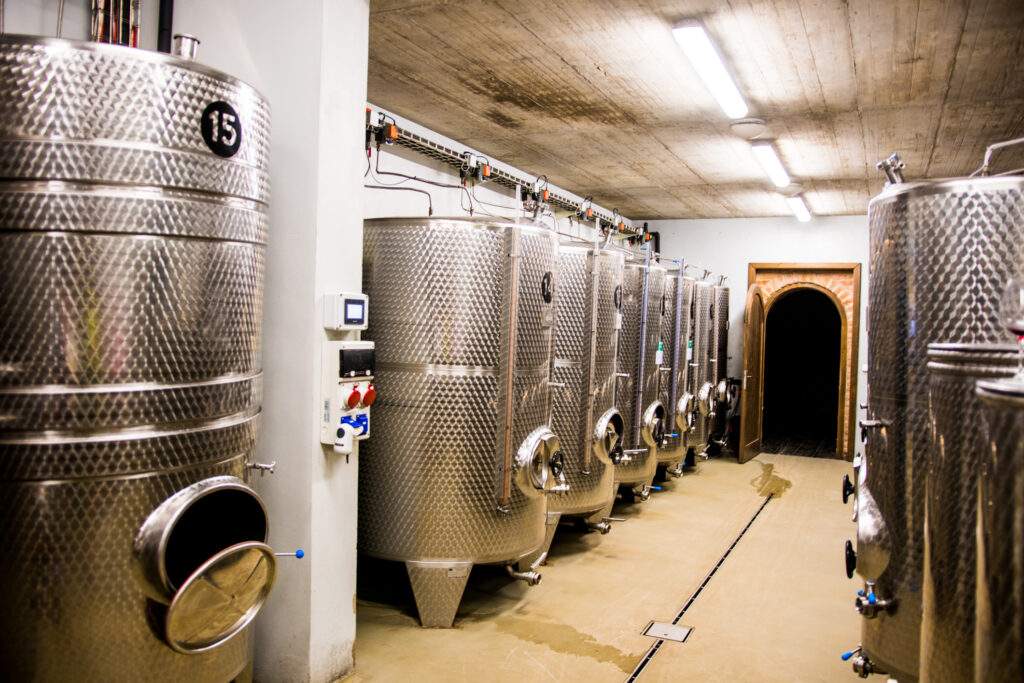
How do you work with wooden barrels when making mature rosé?
We only use wooden barrels for rosé Bočky. This is usually done by grinding the grapes and macerating them on their skins for 3-5 days. Then we press the must, remove the sludge and move it to a wooden barrel, where fermentation takes place. In the first months, we mix the wine (battonage) and then leave it in the barrel on yeast until the next harvest. So it is in barrels for about 1 year in total.
What is your proven ideal combination with Rosé Bočky?
It’s strange from a rosé wine perspective, but I associate Rosé Bočky more with meat. This is because it is a very strong wine, which is why it can also handle meaty dishes, e.g. grilled pork neck steak sprinkled with coarse pepper. The 2019 flanks are a bit softer and go well with lamb pâté. Thanks to its acid and tannins from the barrel, it goes well with beef tartare.
On the other hand, what would you recommend for Rosé Tercia or Trkmanska?
I would prefer lighter dishes with Trkmanska rosé, e.g. vegetable salads, grilled vegetables flavored with herbs. It has the most acids, so it is also excellent with fattier fish.
Rosé Tercie is more of a social aperitif or pool wine that goes without food.
